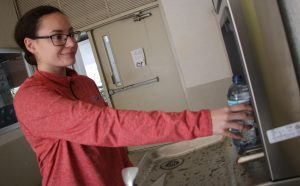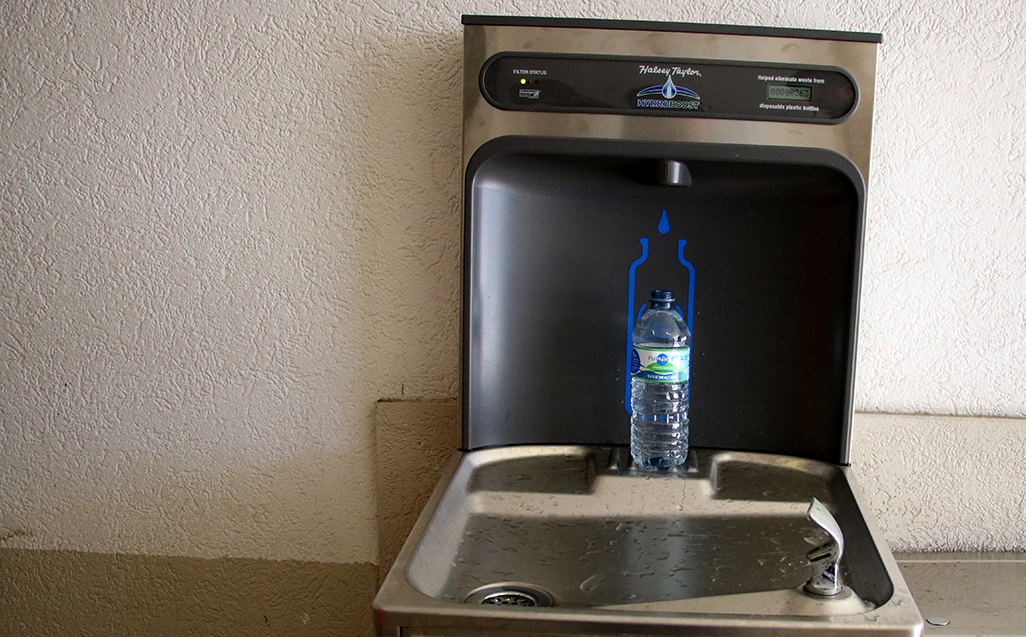
Following break, newly installed water bottle stations quickly caught students’ and faculty member’s attention, pleasing AP Environmental teacher Lisa Maccarone.
The stations are above regular drinking fountains in the 300 and 500 buildings, allowing easier access for both students and faculty to fill their containers. With coaches pressuring student-athletes to remain hydrated, they especially find this new feature useful.
“[The new water fountains] are better because they’re quicker. They affect me a lot since I am a track athlete, and I constantly have to fill up my water bottle because I drink a lot of water,” senior Raeanna Pabon said.
According to Pabon, she uses the fountains about twice a day, but she wishes more fountains were available throughout campus.
“Then I don’t have to go out of my way to get more water,” Pabon said.
Maccarone agreed that hydration is a plus, but her main concern focused on its environmental effects when she first began the project.
The whole idea formed when her 2015 class decided to do an environmental project at the end of the year. Collectively, they took surveys of over 100 people on campus about how people recycled to get some general data. They found that, on average, students and faculty members use 1.58 non-reusable plastic bottles per person daily. Overall, that counts for approximately 838,980 non-reusable water bottles they go through in a single school year.
Concerned with this waste, Maccarone sent this data to First Green Bank in hopes of getting a grant to fund the project. They accepted, giving her half the money she needed–enough for one station. Intent on getting two, Maccarone turned to Boone Foundation, who gave her the rest of the money needed to get the other station. Once funded, Maccarone did the research to ensure she ordered the most environmentally friendly stations that correctly fit the sizes of the school’s pre-existing water fountains.
Maccarone reported that getting county approval proved the biggest challenge – that, and the two-year wait. Nonetheless, she is proud of her work.
“I love this project. After all of the headaches for two years, it’s great. After only a week, we’ve saved a lot of water bottle waste. It also has health benefits because it encourages people to drink more water. I was very happy when they were finally installed and functioning,” Maccarone said.
As of Jan. 13, the new water stations have saved nearly 1,000 plastic bottles since their opening. According to Maccarone, the number rises every hour, as students continue to fill their water bottles. Because of its success, Maccarone hopes to one day get at least one station in every building, but she is unsure if her dream will come to fruition.
Nonetheless, she continues to impact the campus through the Garden Club. The next major project: the club plans to make an outdoor classroom between the 500 and 100 buildings by the end of March.
